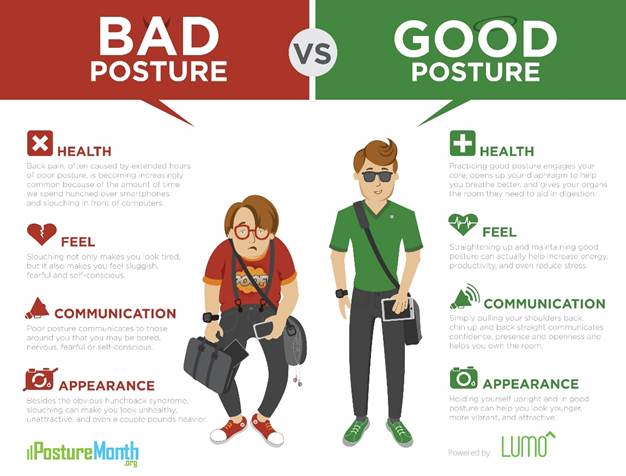In the digital age, where hours are spent slouched over screens or hunched at desks, posture has become a silent yet powerful factor in our overall health — especially when it comes to our shoulders. Poor posture is a leading contributor to shoulder pain, tightness, and even long-term musculoskeletal issues.
Understanding the link between posture and shoulder health is essential for preventing injuries, relieving discomfort, and maintaining good mobility throughout life.
The Anatomy of Posture and the Shoulder
The shoulder is a complex ball-and-socket joint, supported by muscles, ligaments, and tendons — especially the rotator cuff and scapular stabilizers. Good posture helps distribute mechanical stress evenly, keeping the shoulder in a neutral position.
But poor posture, like rounded shoulders and forward head tilt, alters the shoulder’s alignment and strains muscles and joints, making you more vulnerable to conditions like:
- Shoulder impingement
- Rotator cuff injuries
- Frozen shoulder
- Tendonitis and bursitis
How Poor Posture Affects Shoulder Health
1. Forward Head and Rounded Shoulders
Sitting or standing with your head forward and shoulders rolled in leads to tightening of the chest muscles (pectorals) and weakening of the upper back (rhomboids and traps). This imbalance causes:
- Decreased shoulder mobility
- Pain or tightness in the upper back and neck
- Increased pressure on the rotator cuff
2. Kyphotic Spine (Upper Back Hunch)
A rounded upper spine limits shoulder blade movement and disrupts proper biomechanics. Over time, this can lead to inflammation or shoulder tendon wear and tear.
3. Reduced Blood Flow and Nerve Compression
Poor posture compresses nerves and blood vessels, causing tingling or numbness in the shoulders and arms.
Signs Your Posture Is Harming Your Shoulders
- Constant ache or stiffness in the shoulders
- Clicking or grinding sounds with movement
- Headaches and neck pain
- Weak grip or tingling in the hands
- Fatigue or heaviness in the shoulders after sitting or working
Tips to Improve Posture and Shoulder Health
1. Set Up an Ergonomic Workspace
- Keep your monitor at eye level
- Use a chair with lumbar support
- Keep feet flat on the floor
- Elbows should be close to your body and bent at 90 degrees
2. Do Posture Correction Exercises
Incorporate exercises that strengthen the upper back and stretch the chest:
- Wall Angels
- Chin Tucks
- Shoulder Blade Squeezes
- Thoracic Extensions with Foam Roller
3. Stretch Tight Muscles
Target pectoral and upper trapezius stretches to release tightness that causes shoulder rounding.
4. Be Mindful of Your Sitting Habits
Avoid slumping, crossing legs, or leaning on one side. Stand up and stretch every 30–60 minutes during prolonged sitting.
5. Strengthen Supporting Muscles
Include exercises like rows, reverse flys, and rotator cuff strengthening in your workout routine.
Postural Correction Devices: Do They Help?
Posture braces and correction tools can offer short-term support but should not be relied upon long term. They’re useful for training awareness but must be paired with active strengthening and mobility work.
When to See a Specialist
If shoulder pain persists despite postural improvements or if you experience numbness, weakness, or loss of motion, consult a:
- Orthopedic doctor
- Physical therapist
- Chiropractor
Early intervention helps prevent chronic damage or nerve involvement.
Conclusion
Your posture affects more than just how you look — it plays a direct role in your shoulder health. By maintaining good posture, strengthening your supporting muscles, and being mindful of body mechanics, you can significantly reduce shoulder discomfort and improve long-term joint function. Don’t wait for pain to be your reminder; start correcting your posture today for stronger, healthier shoulders.
Disclaimer: This blog is for informational purposes only. Please consult your healthcare provider for personalized advice.
